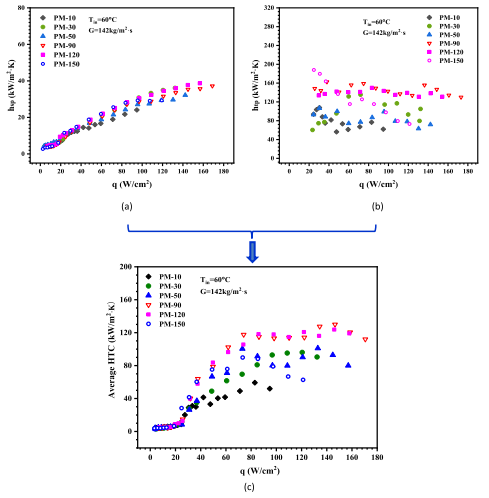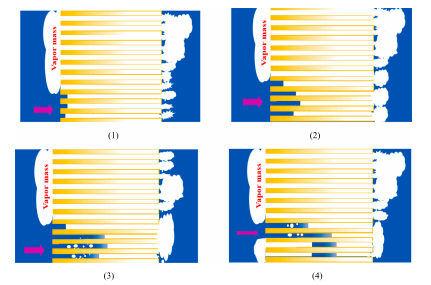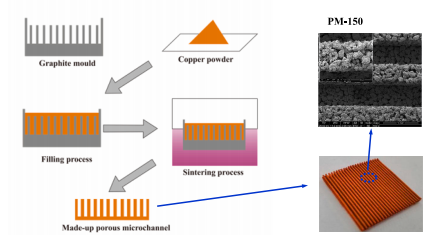近期,我院张东辉课题组研究论文“Characterizing effect of particle size on flow boiling in sintered porous- microchannels” 在《Applied Thermal Engineering》上发表。
论文简介如下:
Flowboiling in porous microchannels draws extensive attention. Subcooled flow boiling of deionized and degassed water was carried out to characterize transport performance. Porous microchannels were sintered from six-sized dendritic-like copper particles: 10, 30, 50, 90, 120 and 150 μm with the same layer thickness of 400 μm.The dimensions of 23 parallel porous microchannels are 600 μm × 1200 μm × 2800 μm (width × depth × length). Experimental results show that the particle size has great effects on theHTC and CHF of flow boiling in porous microchannels. Medium particle size (90 μm or 120 μm) shows highest HTC and CHF. A1verage HTCs of both PM-90 and PM-120 could reach almost 120 kW/(m2·K). The visualization study reveals that the underlying heat transfer mechanism in porous microchannels is dominated by the nucleate boiling in low heat flux and then, by the thin film evaporationfrom moderate to high heat flux. Moreover, two boiling crisis phenomena have been observed: (a) in microchannels sintered from medium size particles, the rewetting-dryout cycle has been well established and sustained without being interrupted by explosive boiling, indicating capillary limits; (b) in other samples, high wall superheat in the rear part usually leads to explosive boiling persistently, which interrupts periodic oscillation modes with heat flux exceeding to moderate level and results in CHF conditions.



本文下载地址:
https://www.sciencedirect.com/science/article/abs/pii/S1359431123006002